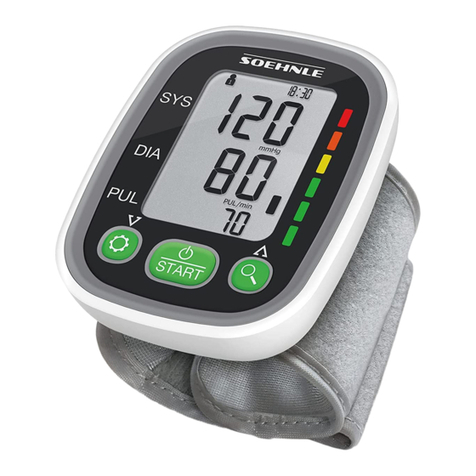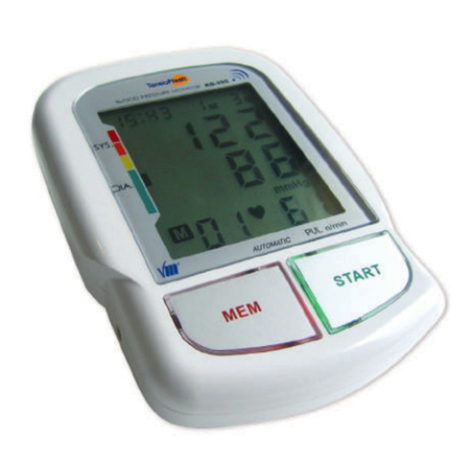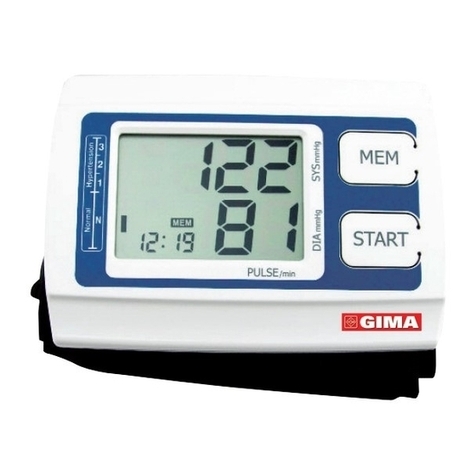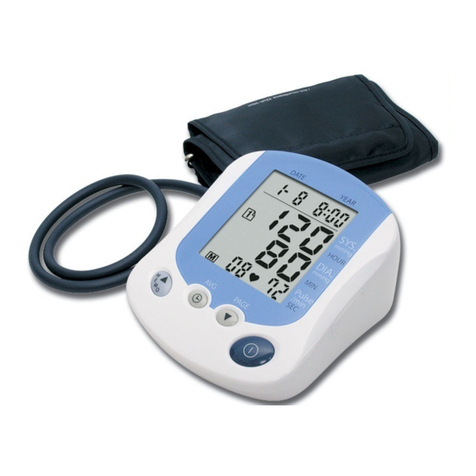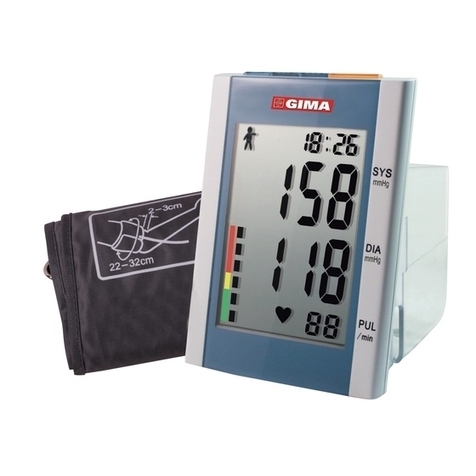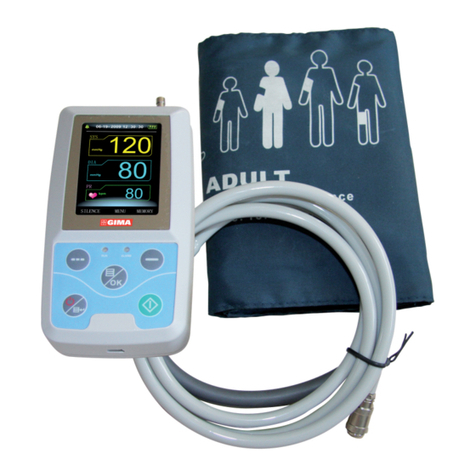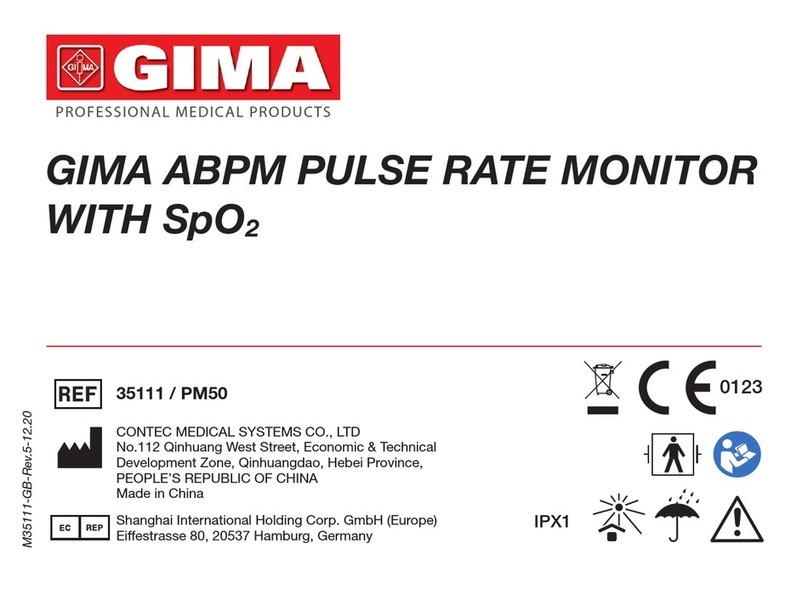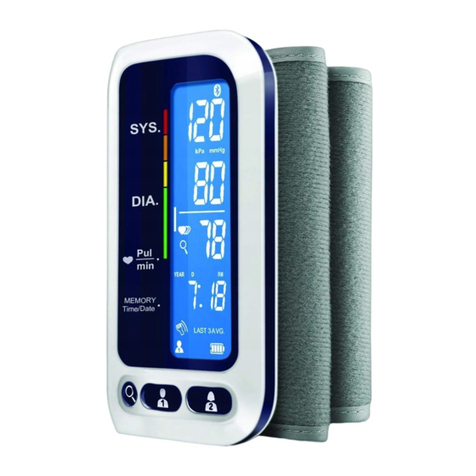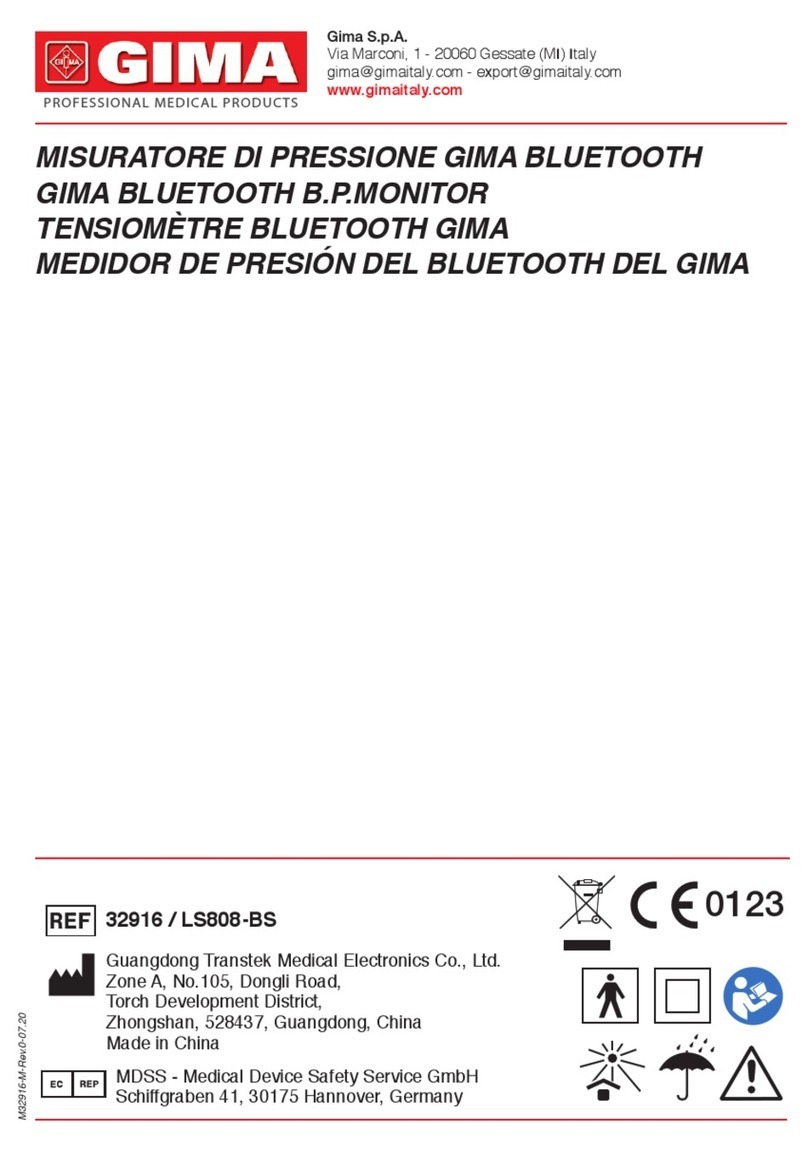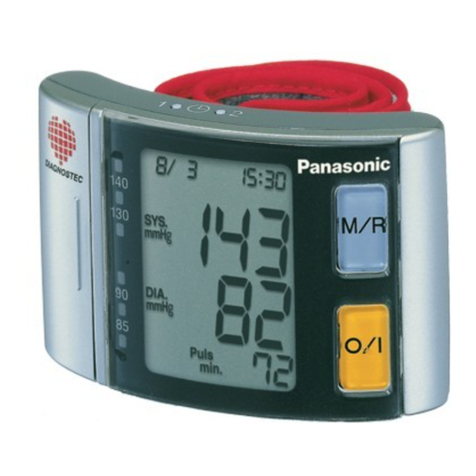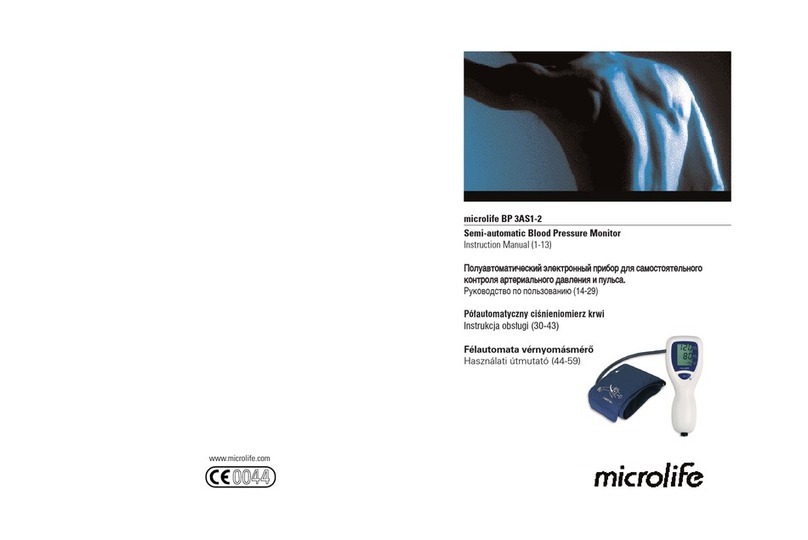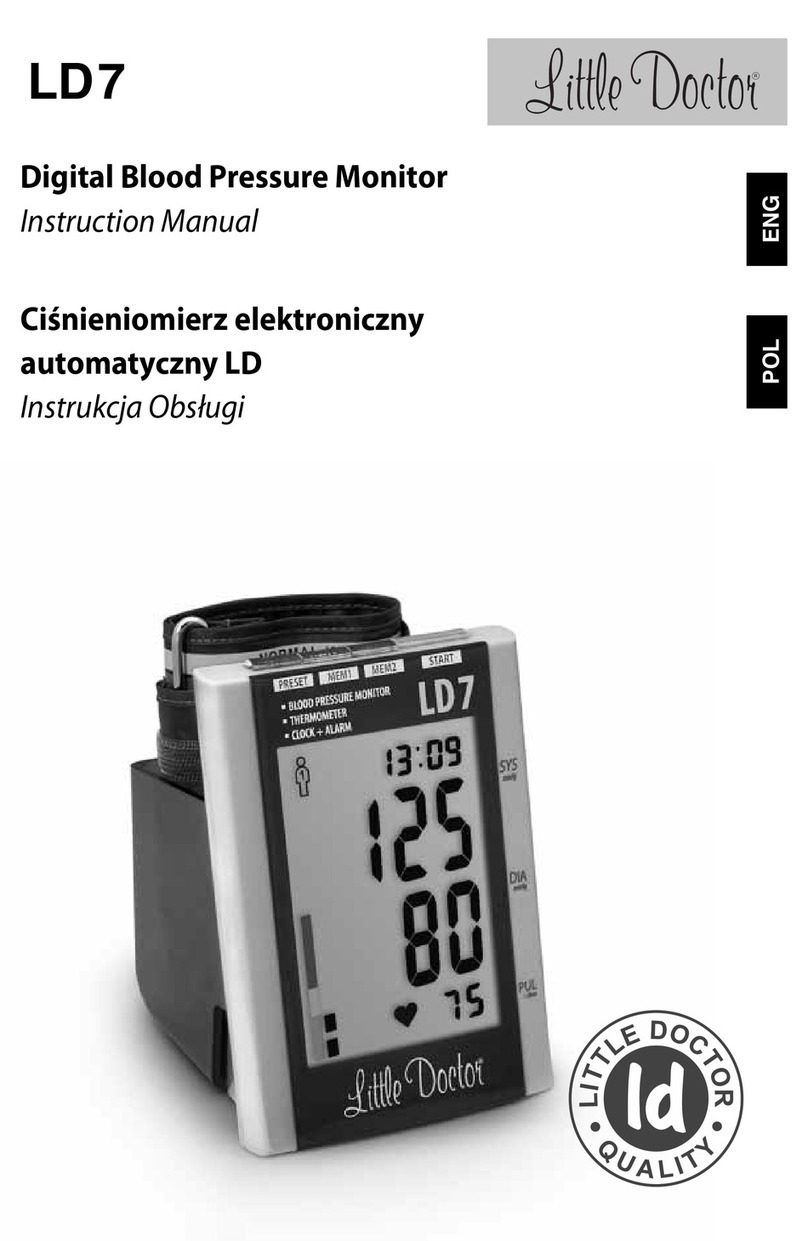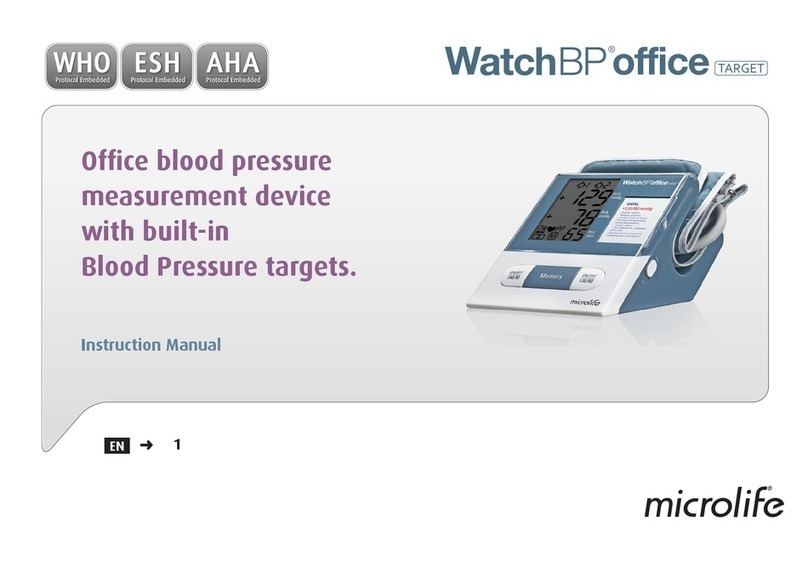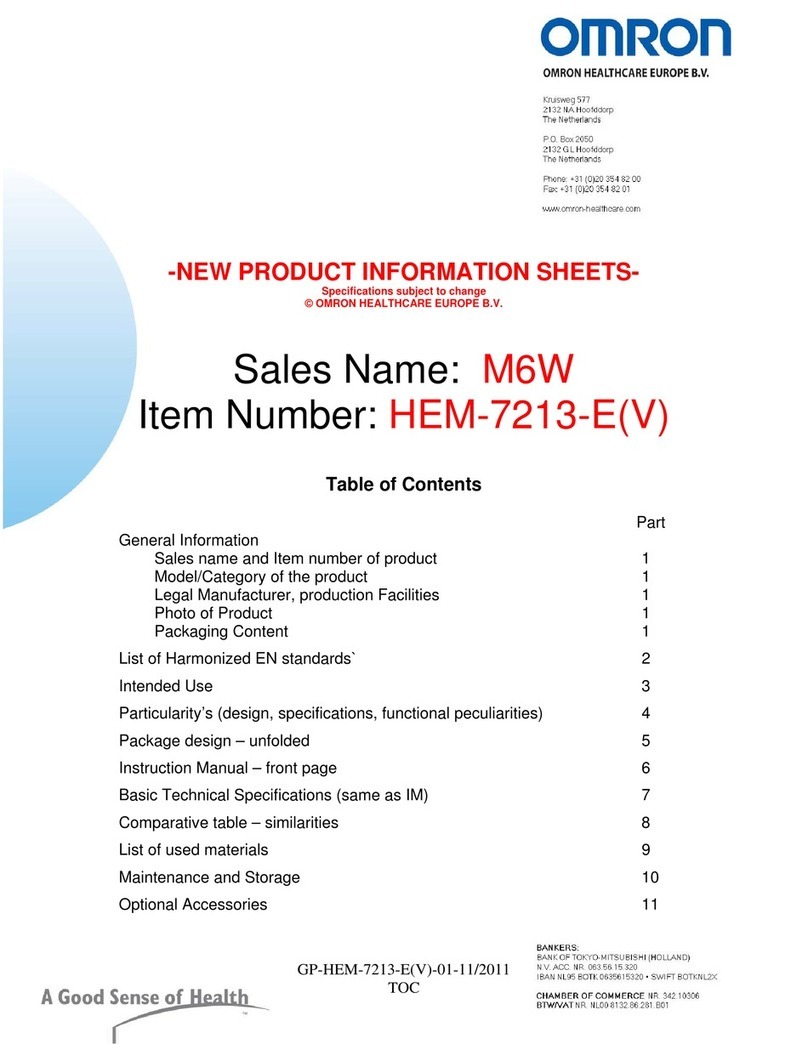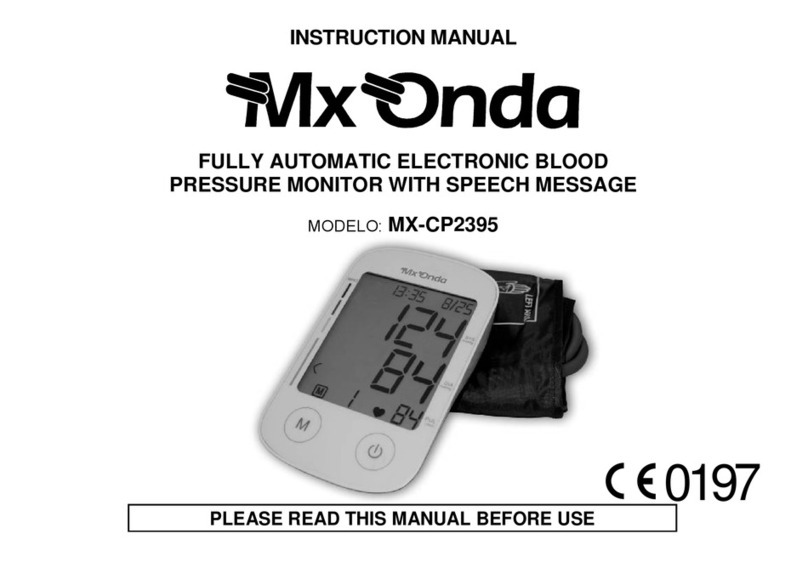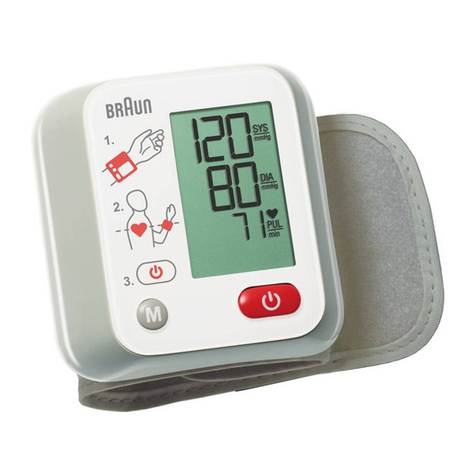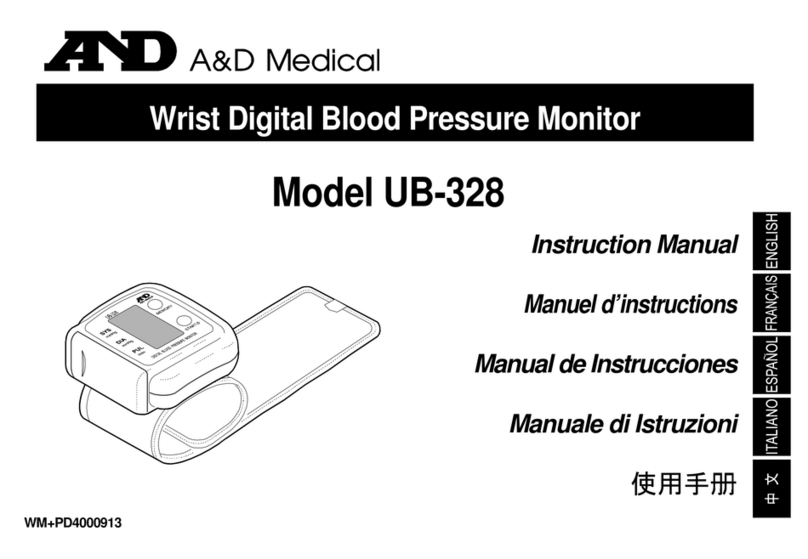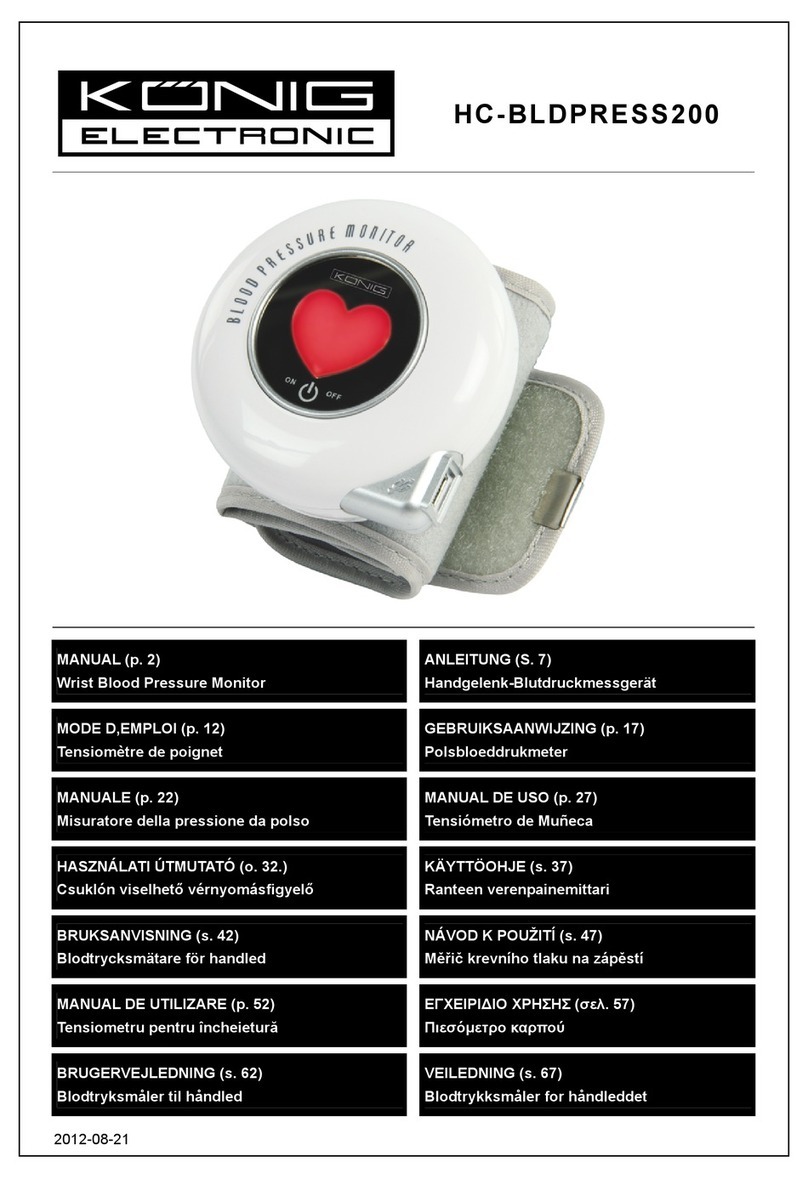
26
ENGLISH
• Rest at least 5 ~ 10 minutes before taking a measurement.
• To allow your blood vessels to return to the condition prior to taking the measurement, please wait at least
3 ~ 5 minutes in between measurements. You may need to adjust the wait time according to your personal
physiological situation.
• We recommend you using the same wrist (preferably the left wrist) and measuring around the same time
each day.
• Sit down comfortably and place your elbow on the table with your feet at on the oor. Please do not cross
your legs during measurements.
• Keep the device at heart level. Relax your hand with the palm facing up.
• Perform measurements in a quiet and relaxed environment at room temperature.
•
Do not move or shake the device during a measurement. Please keep quite and do not talk at the same time.
• Keep in mind that blood pressure naturally varies from time to time through out the day and is affected by
lots of different factors such as stress, eating, smoking, alcohol consumption, medication, and physical
activity, etc.
Normally the blood pressure rises while at work and is at its lowest during sleeping period.
• Blood pressure measurements should be interpreted by a physician or a trained health professional who
is familiar with your medical history. Using the unit and recording the results regularly for your physician to
interpret, you will keep your physician informed of the continuing changes in your blood pressure.
• If you have one of the circulatory problems as arteriosclerosis, diabetes, liver disease, kidney disease,
severe hypertension, peripheral circulation….., please consult your healthcare professional before using
the device.
• This product is not suitable for people with arrhythmias and pregnant women.
• Blood pressure measurements taken with this device are equivalent to those obtained by a trained observ-
er using the cuff / stethoscope auscultation method and are within the accuracy limits prescribed by the
Standard of EN 1060-4.
• For those who have had mastectomy surgery (especially whose’ lymph nodes removed), it’s recommend
take a measurement on the unaffected side.
• When used among medical electronic equipments on the same limb, pressurization of the cuff may cause
temporarily malfunction to other devices.
Results are not intended for direct diagnosis. Please consult with a physician if you have any questions or
concerns about your results.
This product is not suitable for:
- Pregnant women
- People with arrhythmias
- Undergoing intravenous injection on any limb
- Currently in a dialysis treatment
- In pre-eclampsia condition


